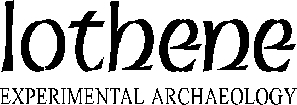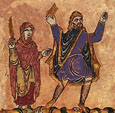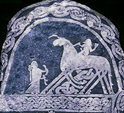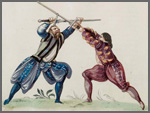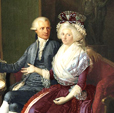Jewellery
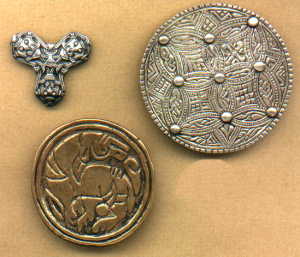 |
Blacksmithing appears to have been a craft which only men practised, but small metal items such as jewellery were made by both men and women. The brooches shown opposite were made by casting. Designs could also be punched into metal, and wires or dots could be fixed to a flat surface to make a pattern. The trefoil (three lobed) brooch is a design which Viking women used to fasten their large triangular cloaks. |
| This shows the back of one of the brooches with details of the fastening. It had to be quite large and robust to be used for holding a thick woolen cloak closed. | 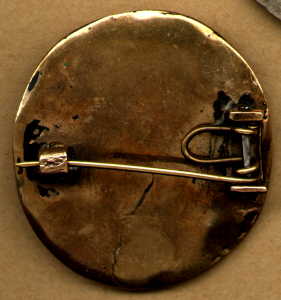 |
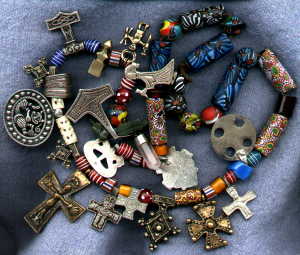 |
Both men and women wore necklaces. These might be simple ones with a couple of beads on a thread or leather thong, or more elaborate ones, as shown here. Most of the beads here are millefiori, with some amber and bone ones. Wood, clay, semi-precious stones and plain glass were also used for beads. The beads are arranged in an irregular pattern. Both crucifixes and Thor's Hammer pendants (symbols of the pagan Norse religion) are hung on the same necklace. One Viking necklace was found to have a pendant of Buddha on it. Before Christianity was firmly established people seem to have followed it alongside older religions. The crucifixes all have equal length arms, apart from the one with the figure on at the bottom right of the picture. This is the usual medieval cross shape. |
| Close up of some of the pendants and beads. The female figure is a Valkyrie carrying a drinking horn. Valkyries were Norse goddesses who carried dead warriors to Valhalla where they would feast forever in the afterlife. A high status woman would traditionally serve guests at a feast with drink herself, although servants brought the food. The crystal pendant in the centre is a very uncommon style. There has only ever been one found in a pagan Saxon grave site. |
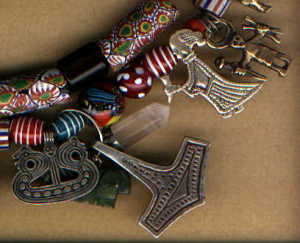 |
